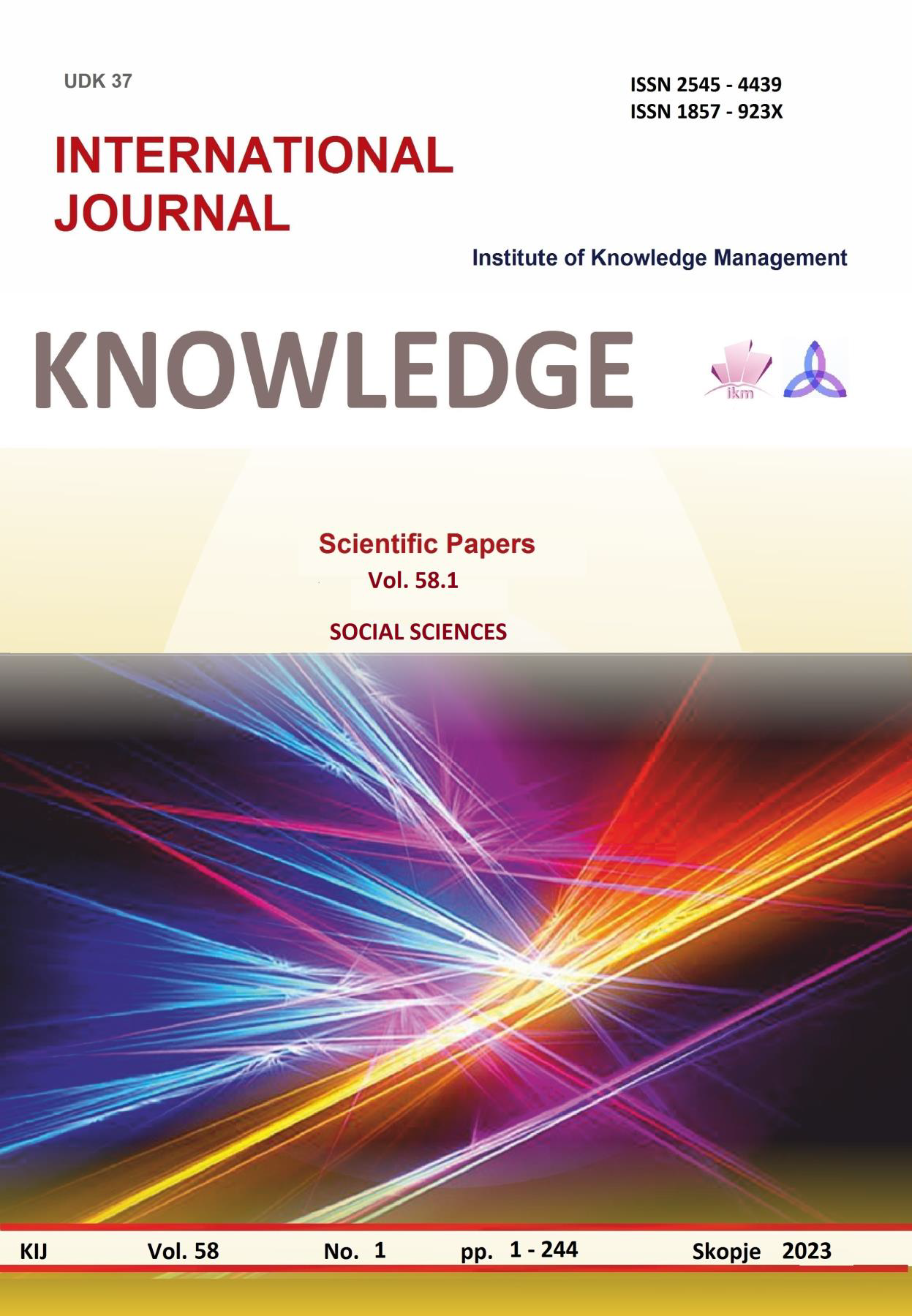APPLICATION AND IMPACT OF SPACE MATRIX APPROACH IN ORGANIZATIONAL PERFORMANCE
DOI:
https://doi.org/10.35120/kij5801117eKeywords:
application, impact, SPACE approach and organizational performanceAbstract
Research brings a contemporary approach of management and aiming for proper performativity and longevity. Through the application of the SPACE approach, it will create a novelty impact on Kosovo organizations, bringing a completely clear and meaningful path and practice. The research presents the possibility of applying the approach to bring to the surface the differences in performance between those traditional approaches. The realization of this research has used mixed methodologies, a research design through the correlation field and a series of analyzes and other tests emphasizing the relation and connection that can exist between the approach and the Kosovo organizations to influence positively in the performance. The research reveals a high probability of possibility for applying the approach towards Kosovo organizations which through the application embraced a new and very competitive performance in the industry. The relationship between the approach and organizations turns out to be very positive expressed in correlative values that will help managers to implement a new scientific and guidance on how to go straightly to strategic performance. The approach will also create for managers an important position in the industry through performance, ensuring the path of sustainability and long-term.
References
Clark, N.D. (1997). “Strategic Management Tool Usage: A Comparative Study”, Strategic Change, 6(7), pp. 417–427. https://doi.org/10.1002/(SICI)1099-1697(199711)6:73.0.CO;2-9.
Davenport, T.H. (2009). Make better decisions. Harvard Business Review, 87(11), pp. 117-123. PMID: 19891389.
Elezaj, E. (2018). THE DETERMINATES OF TRANSFORMATIONAL LEADERSHIP IN KOSOVO SMEs. Knowledge International Journal, 26(6):1671-1674. DOI: 10.35120/kij26061671E.
Elezaj, E., & Elezaj, Nj. (2018). THE IMPORTANCE OF GE TOOL IN CHOOSING AND ASSESSING BUSINESS STRATEGY. Knowledge International Journal 26(6), pp. 1591-1596. DOI: 10.35120/kij26061591E.
Elezaj, E., & Kuqi, B. (2021). RATIONAL DECISION MAKING BASED ON ANALYZING ORGANIZATIONAL SURROUND FACTORS: A VIEW OF CRAFTING DIFFERENTIALITY AND EFFECTIVENESS IN KOSOVO ENTERPRISES. KNOWLEDGE - International Journal, 49(1), 41–45. Retrieved from http://ikm.mk/ojs/index.php/kij/article/view/4618.
Elezaj, E., & Kuqi, B. (2022). EVALUATING ALTERNATIVES FOR LONG–RANGE PLANNING UTILIZING COMBINATORY QSPM–IE IN TRADE ORGANIZATIONS. SCIENTIFIC PAPERS VOL. 55.6, pp. 1043-1047.
Elezaj, E., & Morina, D. (2017). THE ROLE AND IMPORTANCE OF SPACE MATRIX IN STRATEGIC BUSINESS MANAGEMENT. Knowledge International Journal 17.2, pp. 1071-1076. https://www.researchgate.net/publication/343949202.
Elezaj, E., Kuqi, B. (2023). Systematic analyze-weight-evaluate (AWE) approach into decision making: A derivation via externative organizational factors. International Journal of Sustainable Development and Planning, Vol. 18, No. 3, pp. 835-845. https://doi.org/10.18280/ijsdp.180319.
Elezaj, E., Morina, D., & Kuqi, B. (2020). HOW ORGANIZATIONAL MATRIX STRUCTURE CAN IMPACT IN PROJECT MANAGEMENT SUCCESS. International Multidisciplinary Scientific GeoConference: SGEM. Publisher Surveying Geology & Mining Ecology Management (SGEM), 20(1.1) 131-138. DOI: 10.5593/sgem2020/1.1/s01.017.
Gürbüz, T. (2013). “A Modified Strategic Position and Action Evaluation (SPACE), Matrix Method”, Mars, 13-15. Hong Kong.
Knott, P. (2006). A Typology of Strategy Tool Applications. Management Decision, 44(8), pp. 1090–1105. https://doi.org/10.1108/00251740610690630.
Kotler, Ph., Berger. R., & Bickhoff, N. (2015). The Quintessence of Strategic Management, Berlin, Heidelberg: Springer. DOI: 10.1007/978-3-662-48490-6.
Kuqi, B., Elezaj, E., & Hasanaj, P. (2020). Development of Alternative Tourism in Kosovo – Peja Region. Baltic Journal of Real Estate Economics and Construction Management 8(1), pp. 93-101. DOI: 10.2478/bjreecm-2020- 0007.
Prescott, J.E., & Grant, H.J. (1988) “A Manager’s Guide for Evaluating Competitive Analysis Techniques”, Interfaces, 18(3), pp. 10–22. https://doi.org/10.1287/inte.18.3.10.
Radder, L., & Louw, L. (1998). The SPACE matrix: A tool for calibrating competition. Long Range Planning, 31(4), pp. 549-559. https://doi.org/10.1016/S0024-6301(98)80048-4.
Webster, J.L., Reif, E.W., & Bracker, S.B. (1989). “The Manager’s Guide to Strategic Planning Tools and Techniques”, Planning Review, 17(6), pp. 4–48. https://doi.org/10.1108/eb054273.





